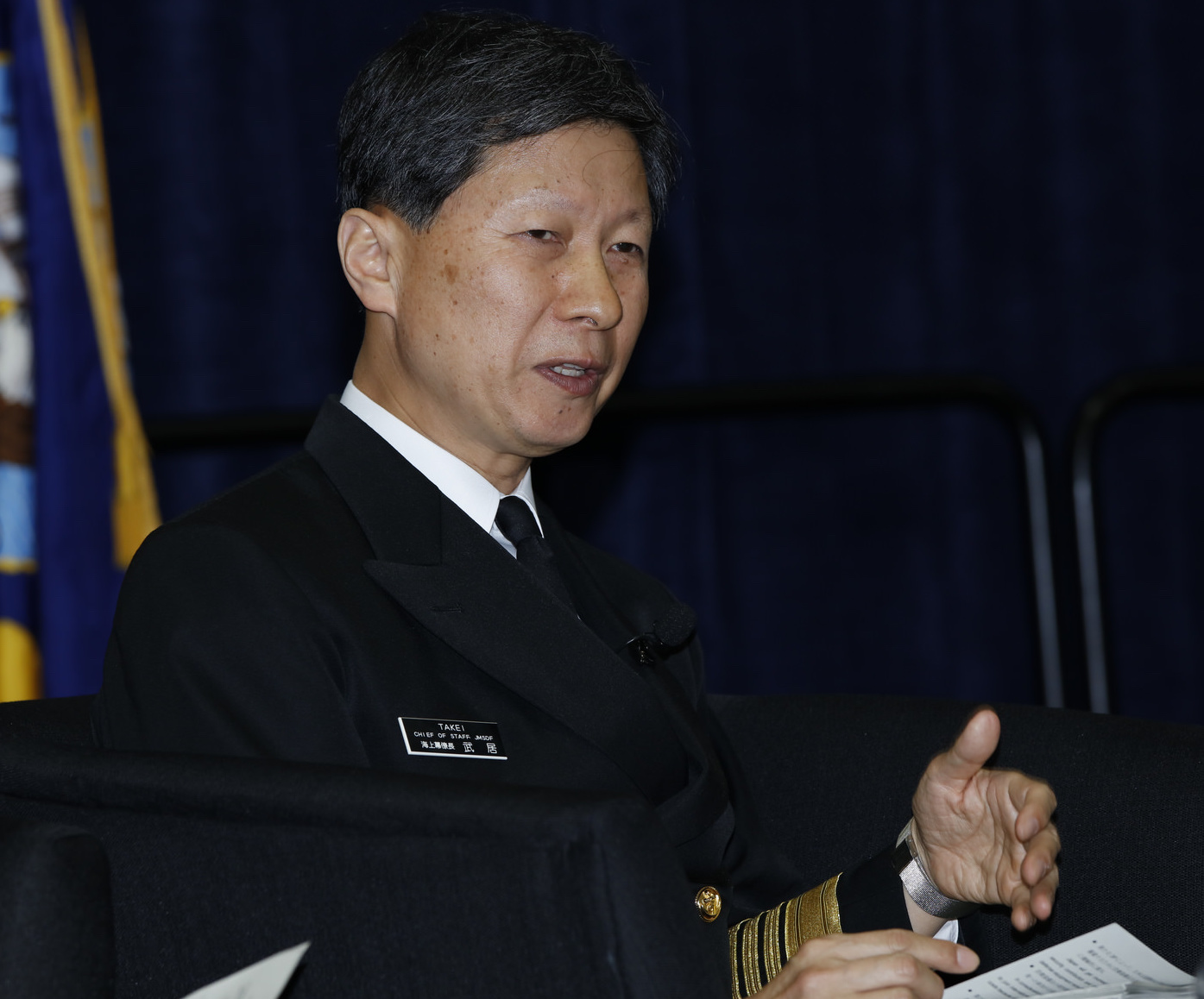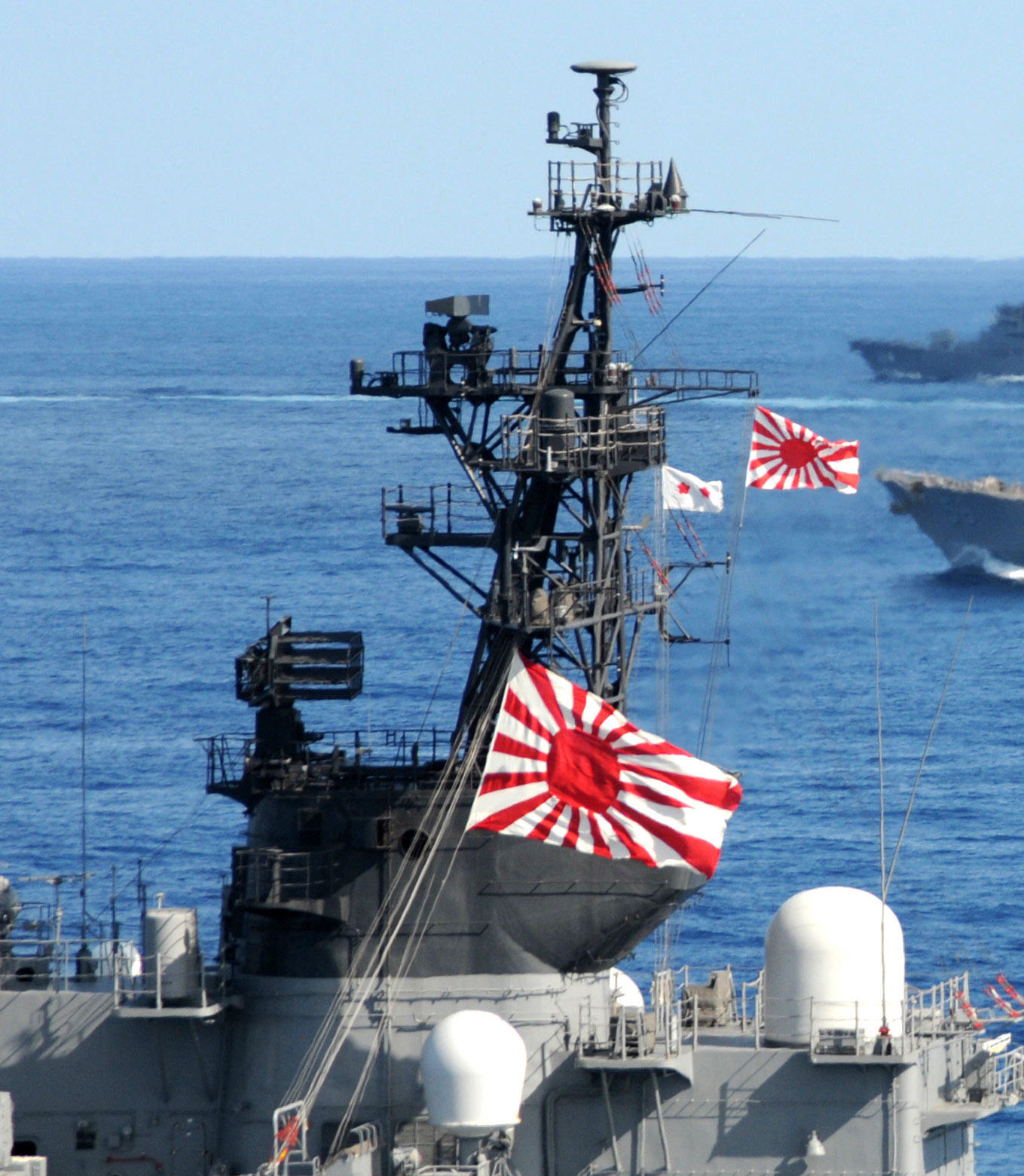
SAN DIEGO — The head of Japan’s naval force said the U.S. defense industry and military services can take bigger roles in helping his forces communicate and operate more jointly in Asia-Pacific and safeguard his nation’s security and regional interests.
That capability for joint operations is critically important as Japan revises its security posture and adapts its self-defense forces to tackle major security and defense concerns, Adm. Tomohisa Takei, chief of staff of the Japan Maritime Self-Defense Force, told a defense conference audience Feb. 18 attending West 2016.
Takei noted four important international factors driving the change: China’s rapid modernization and mobilization of its military and expansion of blue-water capabilities. North Korea’s missile developments and Russia’s rising naval activities in the region. Transnational threats from natural disasters, cross-border crimes, piracy and terrorists. Maintaining a tight relationship with U.S. Navy. Of the latter, Takei said, “It is necessary to introduce the newest technology and tactics from the U.S. Navy.”
Takei, with just rare assistance of a translator, spoke during the session moderated by retired Adm. Thomas Fargo on the second day of the conference hosted by U.S. Naval Institute and AFCEA International. Fargo is a former head of U.S. Pacific Command and U.S. Pacific Fleet and the current chairman of the board of directors of Huntington Ingalls Industries, Inc.
Takei also noted two key domestic concerns that impact Japan’s defense posture. The first is its aging population and tight government budgets. “The young generation is shrinking rapidly,” said Takei. “We already are in competition with private companies for recruits” and it’s bound to get even tougher in coming years. Secondly, Japan faces limitations in what its private industries can do in support of strengthening its defense forces. “It’s become harder and harder to acquire enough defense capability,” he noted.
But will that change? Most of Japan’s major defense corporate industries do largely commercial business, with defense work accounting for less than 10 percent. “It seems hard to expect further investment (from them) for unstable and unforseen international defense business,” he said, noting the defense industry “is hesitant to step forth.” Moreover, he added, “Japanese public opinion is against weapons export.”
Still, there may be room for cooperative development. “Japanese defense industry has high-end technology, but there’s a lack of expertise and experience” in developing these jointly with other international partners, Takei said. “The biggest concern is the leaking of security information.” Many defense companies are small branch companies of larger companies, he said, but he sees potential in cooperating “as a partner in development or supplier of some part” for U.S.-made equipment, perhaps in the area of communications and information technology. “Japan cannot be a key player… but a key partner for U.S. industry in the future,” he added.
China, with its military modernization and expansion, remains a sensitive yet significant issue for Japan.
“China is a very important country among the Asia-Pacific countries. China is expected to play a significant role in the Pacific security,” Takei said, speaking in Japanese to address the question more clearly. “Already, the Chinese Navy is involved in anti-piracy operations off the Somalia coast. They are engaged in modernization of their military powers — both quantity wise and quality wise — and it is a major concern. The not-transparant nature of their armament is a big concern to the neighboring countries.”
“Their South China Sea activities to change the status quo of the region is a big concern around the region,” he said. “The Japanese government stance is that these issues should be resolved through a peaceful method and also according to international law.”

“Yesterday,” he added in English, “the defense minister of Japan mentioned that Japan strongly supports U.S. freedom of navigation operations in the South China Sea.”
China has condemned recent operations of U.S. ships in that region, claiming violations of its territorial borders. But U.S. officials including U.S. Pacific Command’s top officer, Adm. Harry Harris, insist naval ships will continue to transit and operate in the area because they are free to be in international waters.
Japan’s maritime force was established in 1952 but vastly differs from its predecessor, the Imperial Japanese Navy, a blue-water force that operated for 77 years. Its role largely in self-defense is changing as government leaders have revised the security policy and are reforming the force to counter growing threats in the region, particularly from China and its liberal claims of the South China Sea and critical rock mounds and islets in an area rich in fishing and natural resources. “We need to adapt ourselves to the new security environment,” Takei said, adding an important piece is having a “sound” relationship between the JMSDF and the U.S. Navy.
In adjusting to the new joint security environment, Japan’s maritime force must adapt itself to tackle such threats — and that means having the ability to seamlessly train and interoperate with allies and partners including the United States. So strong and integrated command, control, communications, computers and information (C4I) systems are critical needs.
“We have to continue to build secure and intergrated C4I networks to support the interoperability especially between the JMSDF and the U.S. Navy. A shared C4I system between our forces ensures good and effective operations,” Takei said, speaking from prepared remarks. “In general, I am concerned that if we don’t adapt to the security environment, it’s going to be gaps in the alliance.”
Takei said such efforts help maintain the U.S.-Japan alliance, much like a flower that needs regular care and watering. He heaped thanks to the United States, in particular the U.S. Navy and ships including the aircraft carrier USS Ronald Reagan (CVN-76), for coming to Japan’s aid after the devastating 2011 earthquake and tsunami. The response further strengthened the alliance, he said, adding “the people of Japan have not forgotten what that ship had done for our country.”
“Interoperability is key to connect the navies tight,” he said.





